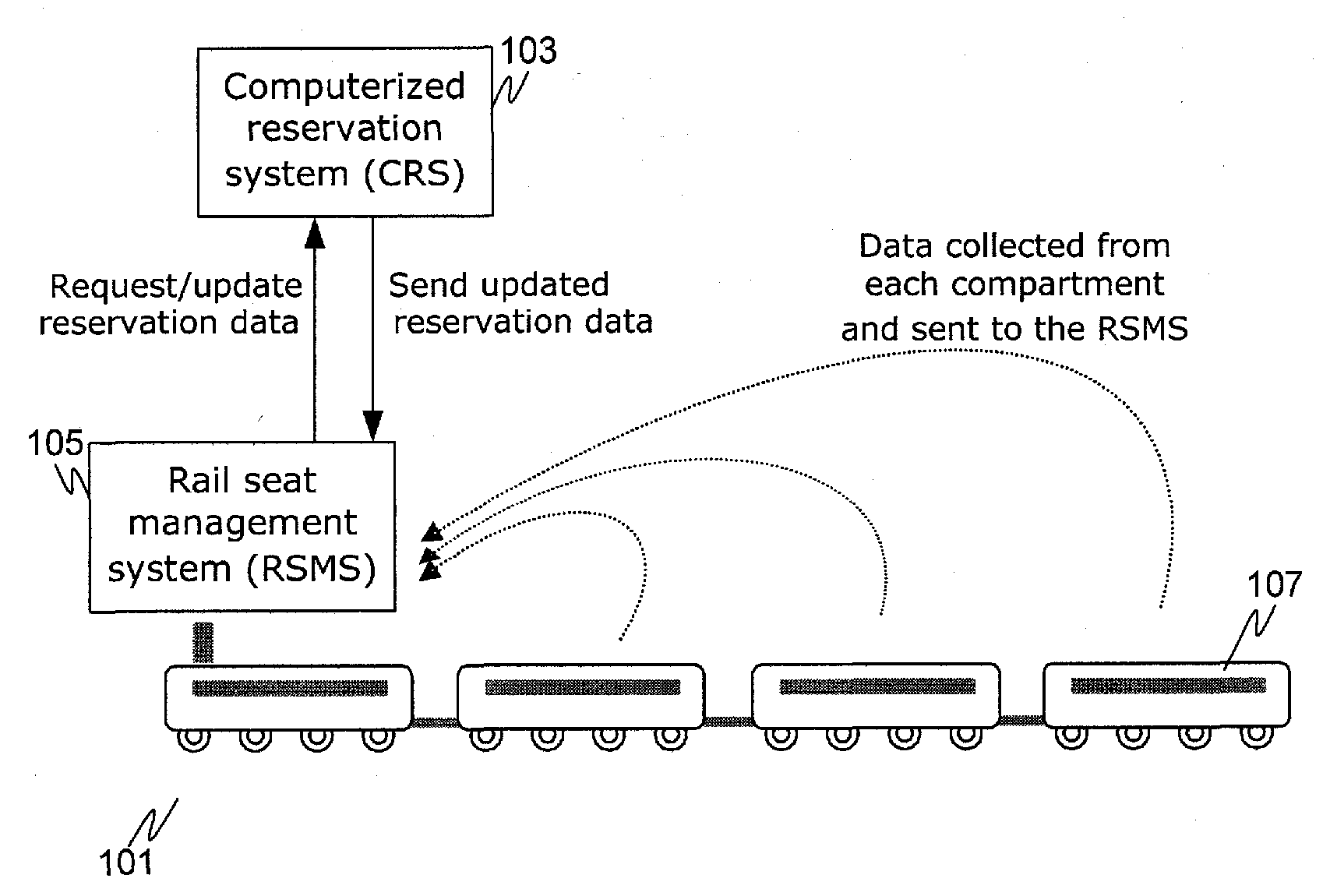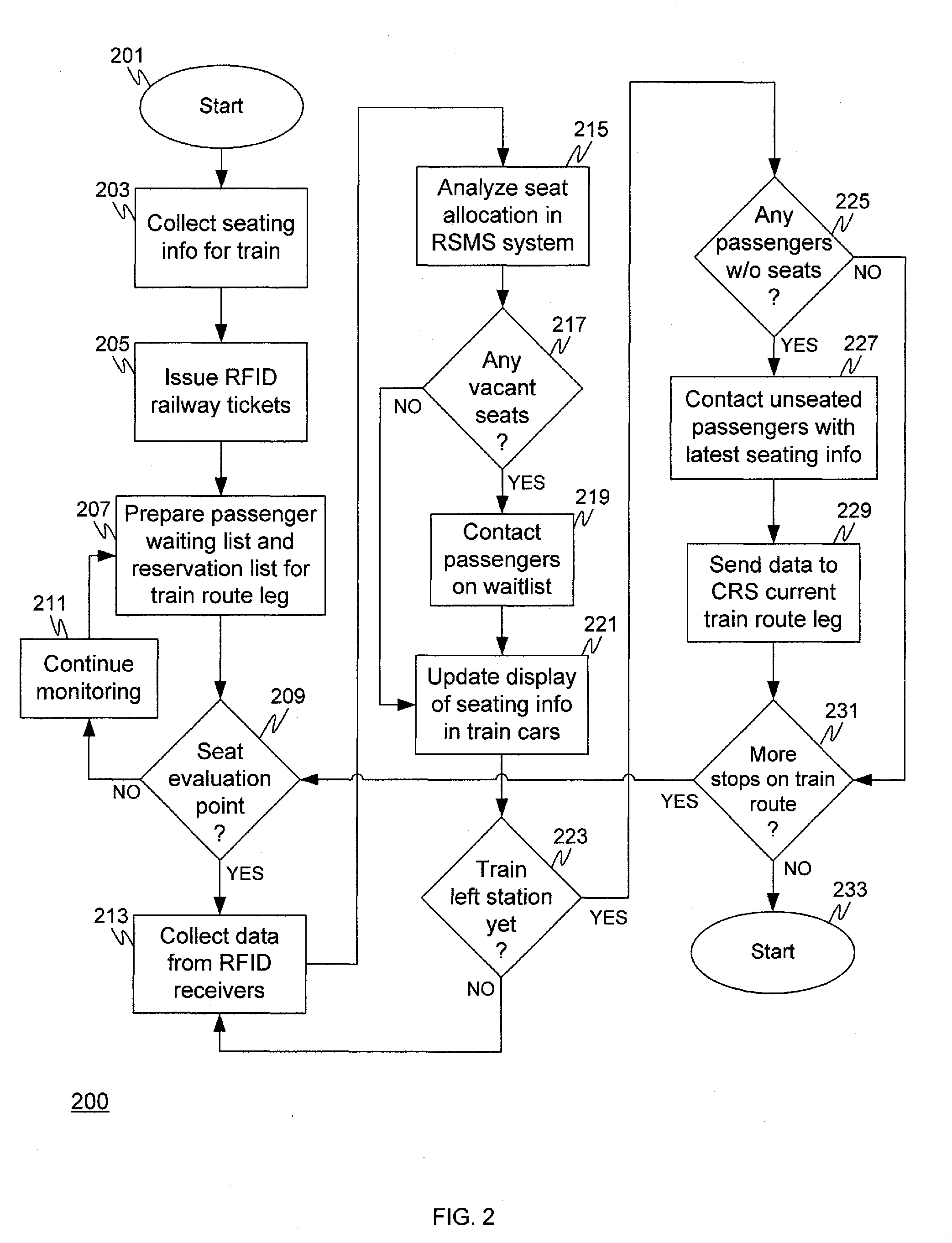Dynamic Reallocation of Seats in Rail Travel Using RFID Technology
a technology of seat reallocation and rail travel, applied in the field of mass transit travel logic systems and methods, can solve the problems of ineffective conventional seat allocation systems, ineffective systematic allocation of seat allocation, de-allocation and reallocation of railway seats, etc., and achieve the effect of effective utilization of available seat resources and efficiency gains
- Summary
- Abstract
- Description
- Claims
- Application Information
AI Technical Summary
Benefits of technology
Problems solved by technology
Method used
Image
Examples
Embodiment Construction
[0016]FIG. 1A depicts an overview of information handling components in the system as it is used by passengers on a railway train 101. The new system is helpful in doing a dynamic and systematic seat allocation using RFID tags / readers or other like sensors to track available seats for more effective seat allocation / reallocation. Passenger reservation and ticket information is stored in the Computerized Reservation System (CRS) 103. The CRS is not generally located on the train 101, but rather, is typically located in a central location (e.g., a reservation center or data center). In some implementations the CRS 103 may include components distributed in different locations and interconnected by communications links (e.g., via the Internet, telephone, radio transmissions, satellite communication links, or the like).
[0017]A Rail Seat Management System (RSMS) 105 is included on the train 101. The RSMS 105 is configured to collect data from RFID readers in each car to ascertain the numbe...
PUM
 Login to View More
Login to View More Abstract
Description
Claims
Application Information
 Login to View More
Login to View More - R&D
- Intellectual Property
- Life Sciences
- Materials
- Tech Scout
- Unparalleled Data Quality
- Higher Quality Content
- 60% Fewer Hallucinations
Browse by: Latest US Patents, China's latest patents, Technical Efficacy Thesaurus, Application Domain, Technology Topic, Popular Technical Reports.
© 2025 PatSnap. All rights reserved.Legal|Privacy policy|Modern Slavery Act Transparency Statement|Sitemap|About US| Contact US: help@patsnap.com



